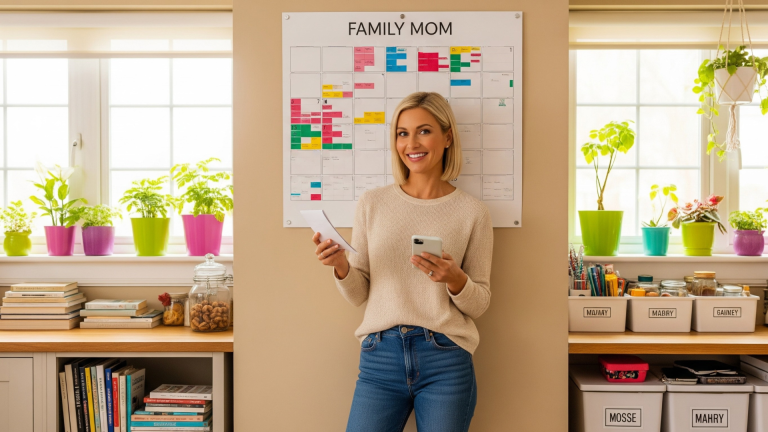Managing Screen Time: Healthy Digital Habits for Children

Kids are glued to smartphones, tablets, TVs, and gaming consoles more than ever before. While these devices can be great for learning and fun, too much screen time can have downsides.
This can affect school performance, make children feel isolated, affect their mental health and they may also stumble upon Irish online casino. That’s why it’s crucial to help children develop healthy digital habits. This way, they can enjoy the benefits of technology without letting it take a toll on their well-being.
Understanding the Impact of Screen Time

To build healthy digital habits, it’s important to first understand how screen time affects kids. The impact of screens varies based on how much time is spent, what they’re doing, and how they’re using the devices.
- Physical Health: Too much screen time can cause physical issues like eye strain, headaches, and poor posture. Long periods of sitting can also lead to a more sedentary lifestyle, which raises the risk of childhood obesity.
- Cognitive Development: Research shows that excessive screen time, particularly with passive activities like watching videos or playing non-educational games, can negatively impact a child’s cognitive growth. It might make it harder for them to focus, solve problems, and think critically.
- Social and Emotional Impact: Spending too much time on screens can limit a child’s chances to interact face-to-face, which is crucial for developing social skills and emotional intelligence. Additionally, social media and online games can expose them to cyberbullying and unrealistic comparisons, which can contribute to anxiety and depression.
Setting Screen Time Guidelines
The American Academy of Pediatrics (AAP) provides specific guidelines on screen time that can help parents establish healthy habits for their children:
- For children under 18 months: Avoid screen time, except for video chatting. At this age, interaction with caregivers is essential for brain development.
- For children aged 2 to 5 years: Limit screen time to no more than one hour per day of high-quality programming. Parents should co-view with children to help them understand the content.
- For children aged 6 years and older: Establish consistent limits on screen time, ensuring that it doesn’t interfere with sleep, physical activity, or other healthy behaviors. Encourage children to use media in a way that enhances their learning, creativity, and social engagement.
Tips for Developing Healthy Digital Habits

Managing screen time effectively means more than just setting limits; it’s about creating a well-rounded digital lifestyle. Here are some practical tips to help kids build healthy screen habits:
- Lead by Example: Kids tend to mimic what they see. If parents are always on their phones or glued to the TV, children are likely to follow suit. Show them how to balance screen time by modeling it yourself.
- Create Tech-Free Zones: Set up certain areas of the house, like the dining room or bedrooms, as screen-free zones. This encourages children to focus on mealtime, family conversations, or reading without the distraction of screens.
- Establish Screen-Free Times: Designate times during the day when screens are off-limits, like during meals, family gatherings, or before bed. This helps children learn to enjoy and engage in other activities without relying on technology for entertainment.
- Encourage Outdoor Play and Physical Activity: Active play is crucial for kids’ development. By promoting outdoor activities, sports, or hobbies, you can help children find interests that don’t involve screens and support their physical health.
- Use Parental Controls: Many devices have built-in parental controls to help monitor and limit screen time. These tools can be useful for restricting access to inappropriate content and setting time limits on apps or games.
- Promote Educational Content: Not all screen time is the same. Encourage children to use educational apps, games, and videos that foster learning and creativity. This way, screen time becomes a more active and enriching experience.
Balancing Screen Time with Other Activities
Finding the right balance between screen time and other important parts of life can be tough. Here are some tips to help ensure that children have a well-rounded routine:
- Prioritize Sleep: Sleep is crucial for a child’s growth, learning, and emotional health. Too much screen time, especially before bed, can disrupt sleep. Set a “no screens before bedtime” rule and make sure your child gets the right amount of sleep for their age.
- Encourage Offline Hobbies: Help your child find interests that don’t involve screens, like reading, drawing, or playing a musical instrument. Offline activities can boost creativity and give them a sense of achievement.
- Family Time Without Screens: Spend quality time together as a family without screens. Play board games, cook meals together, or go for walks. This helps strengthen family bonds and encourages meaningful conversations.
- Support Social Interaction: Promote face-to-face interactions with friends instead of just online communication. Real-life socializing is important for developing empathy, communication skills, and healthy relationships.






